site search
online catalog
VIVID EYEWITNESS ACCOUNT OF THE BATTLE OF GETTYSBURG – LT. HENRY J. WALTZ, 93RD PENNSYLVANIA VOLUNTEERS
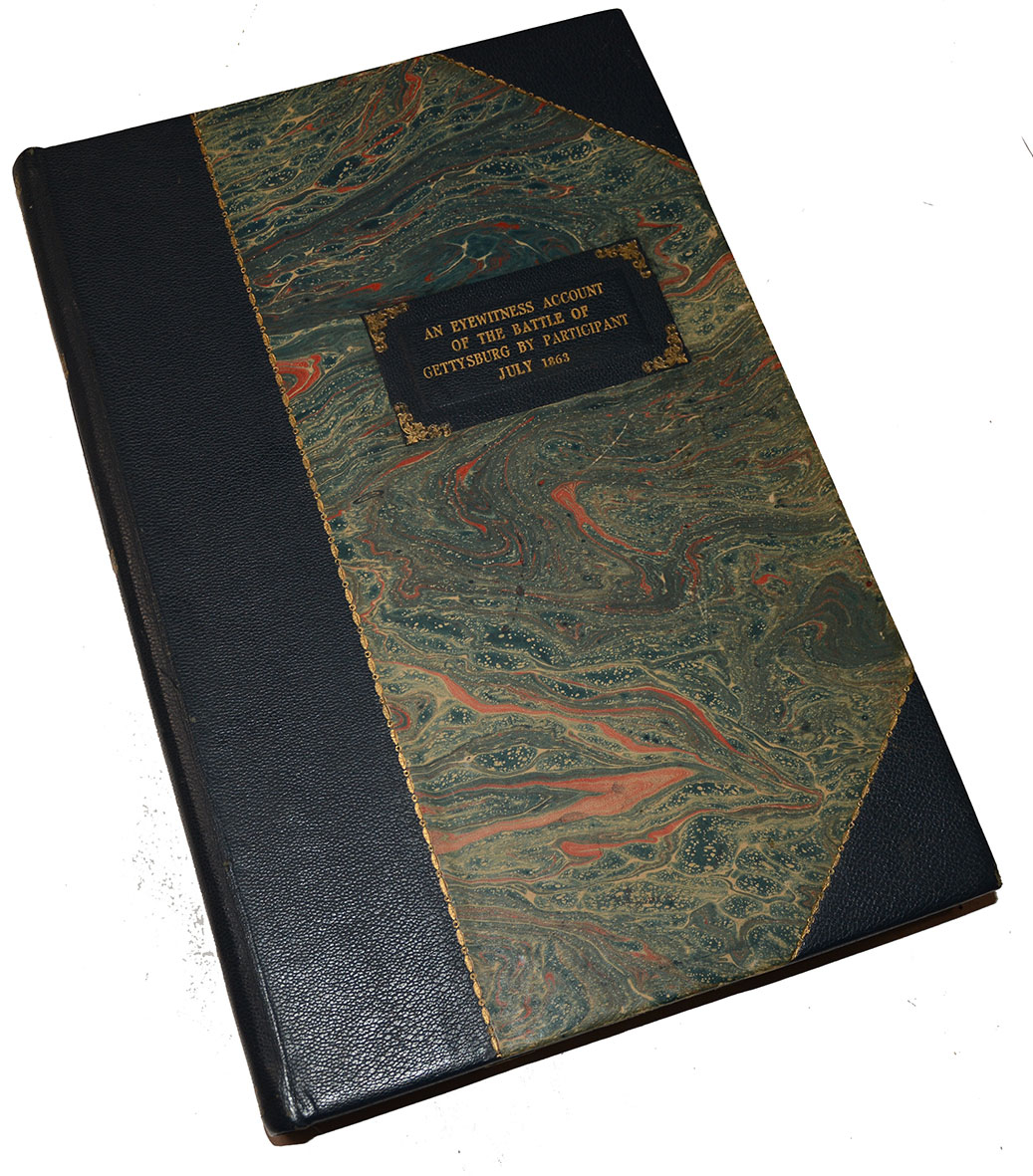
Hover to zoom

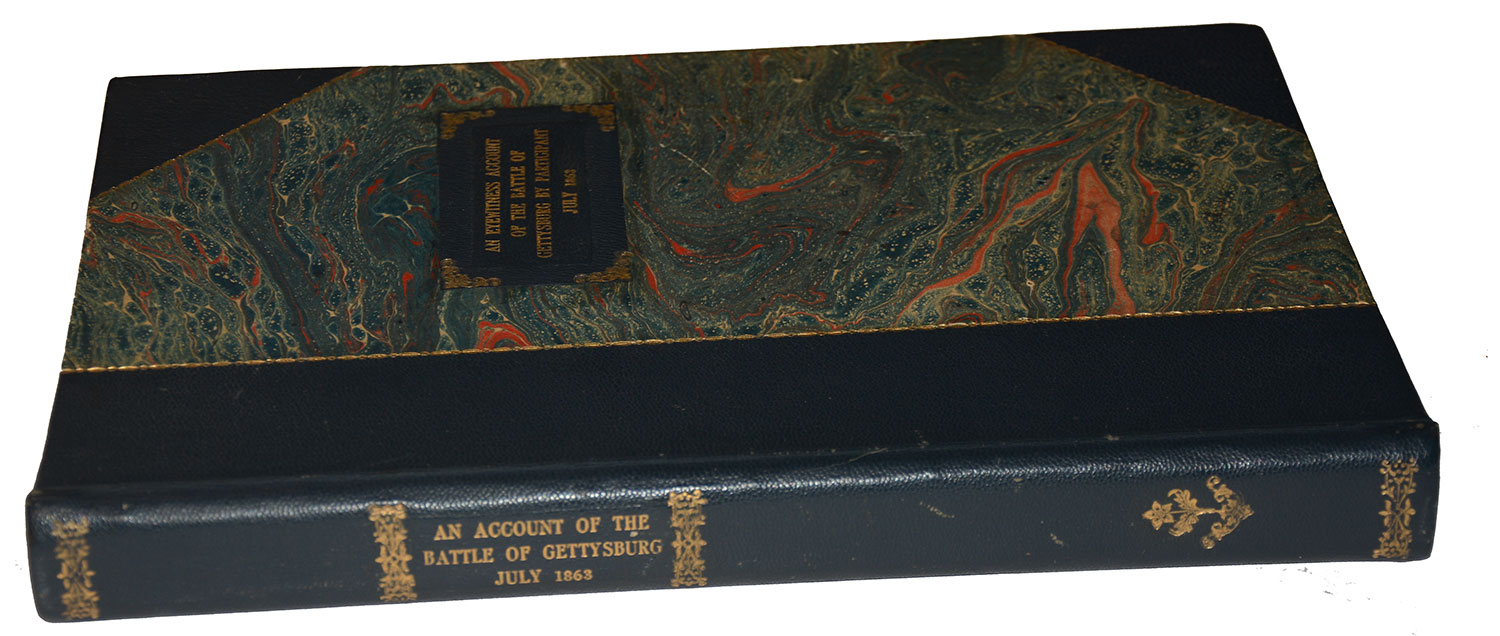
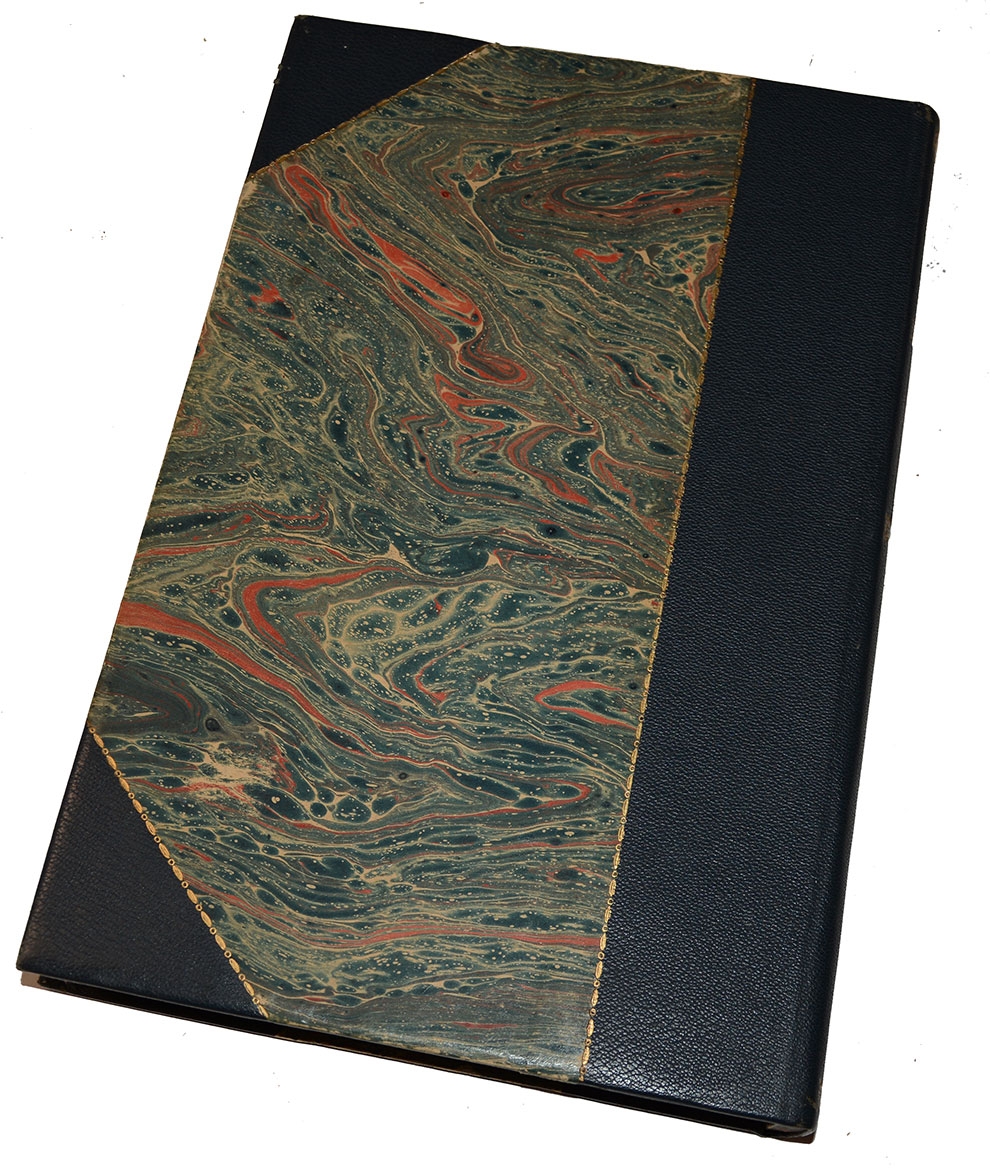
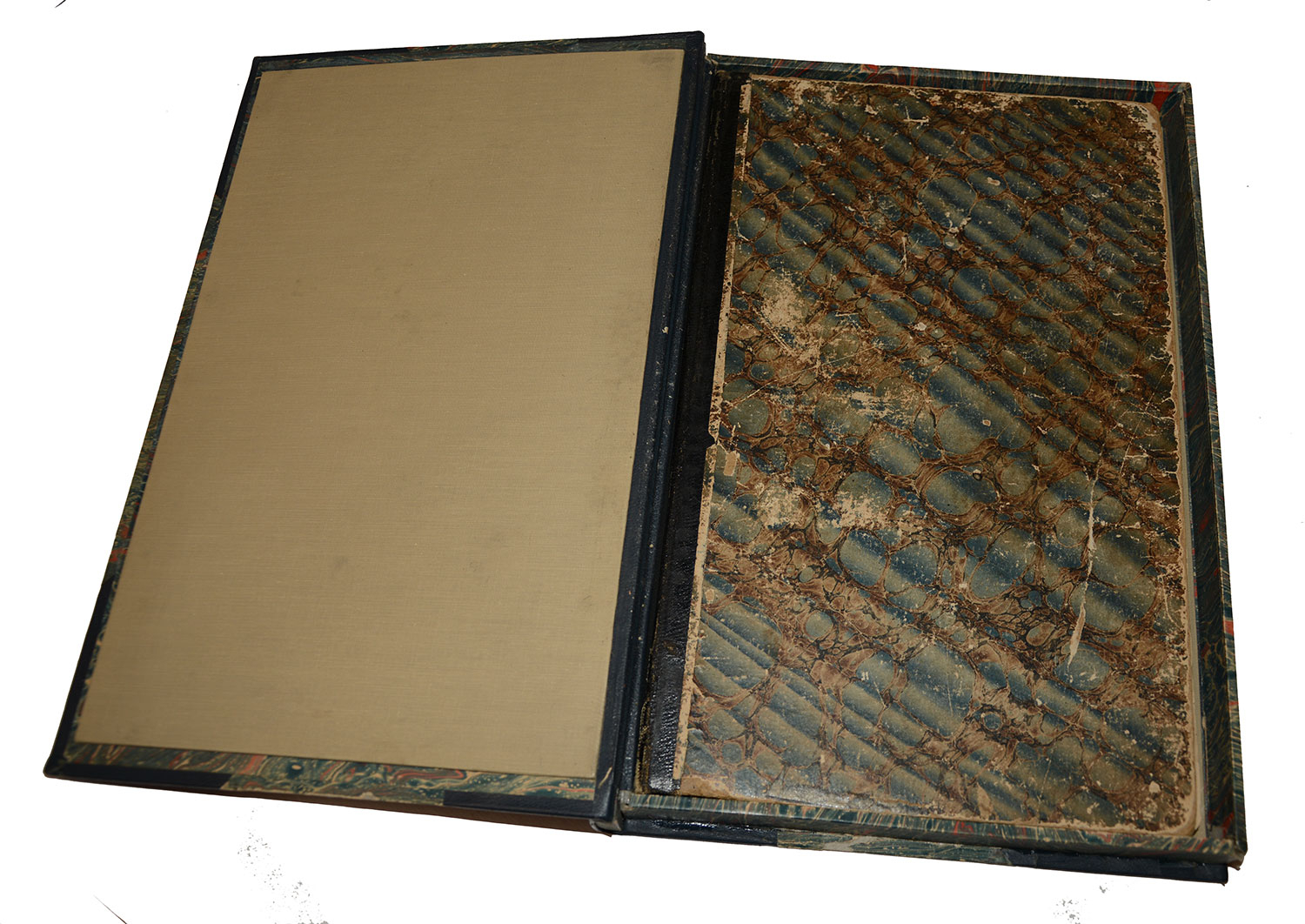
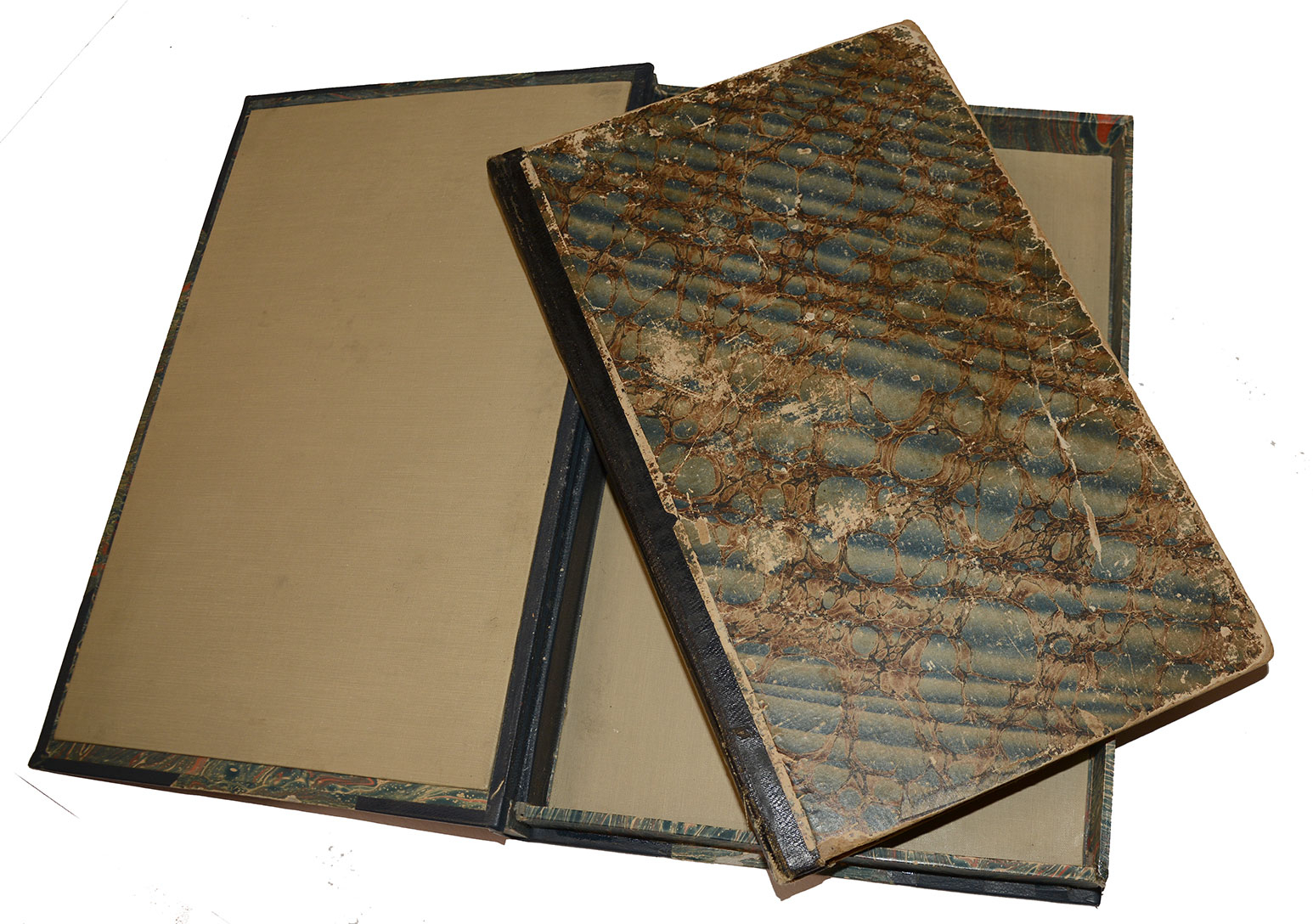
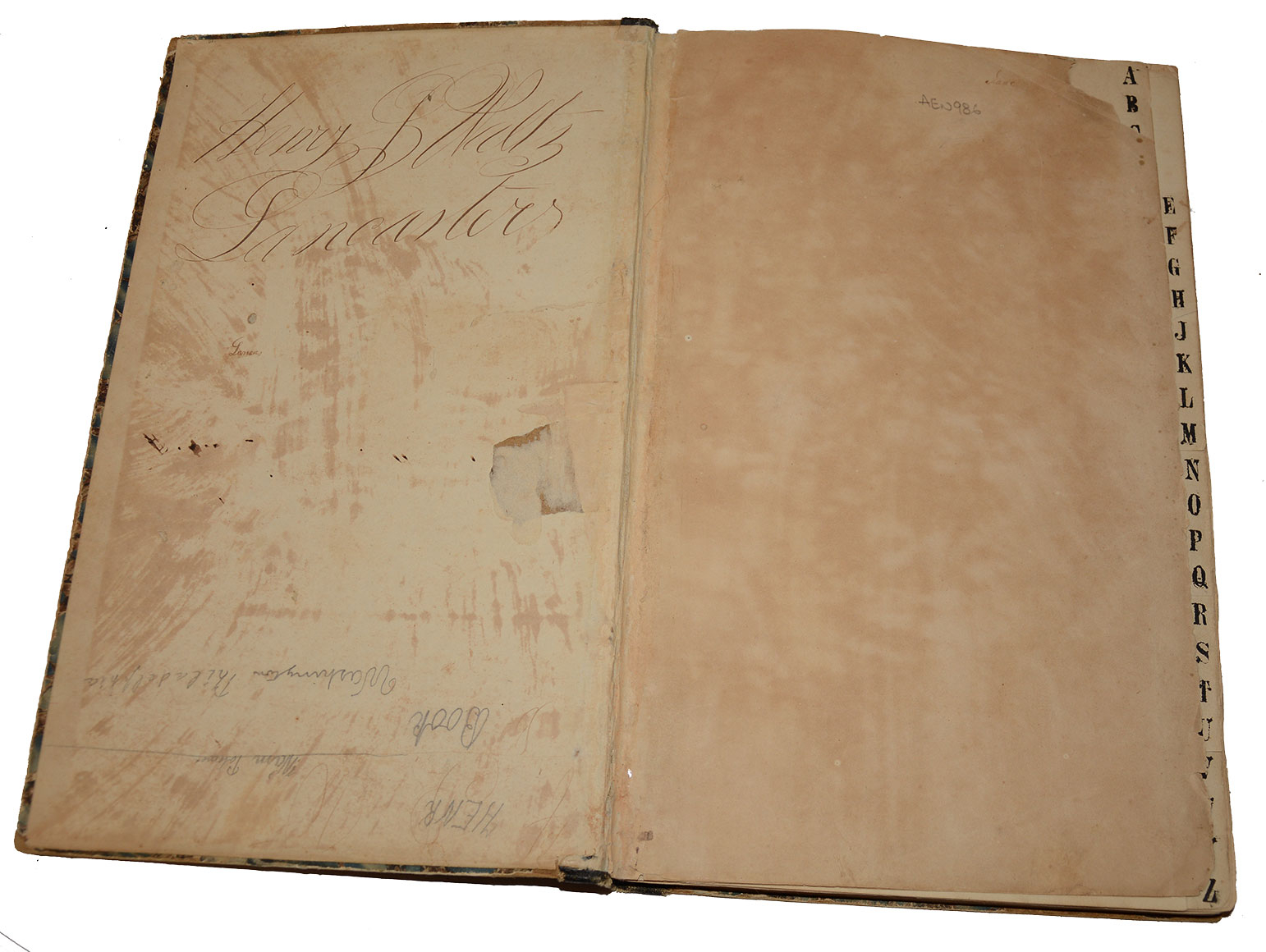
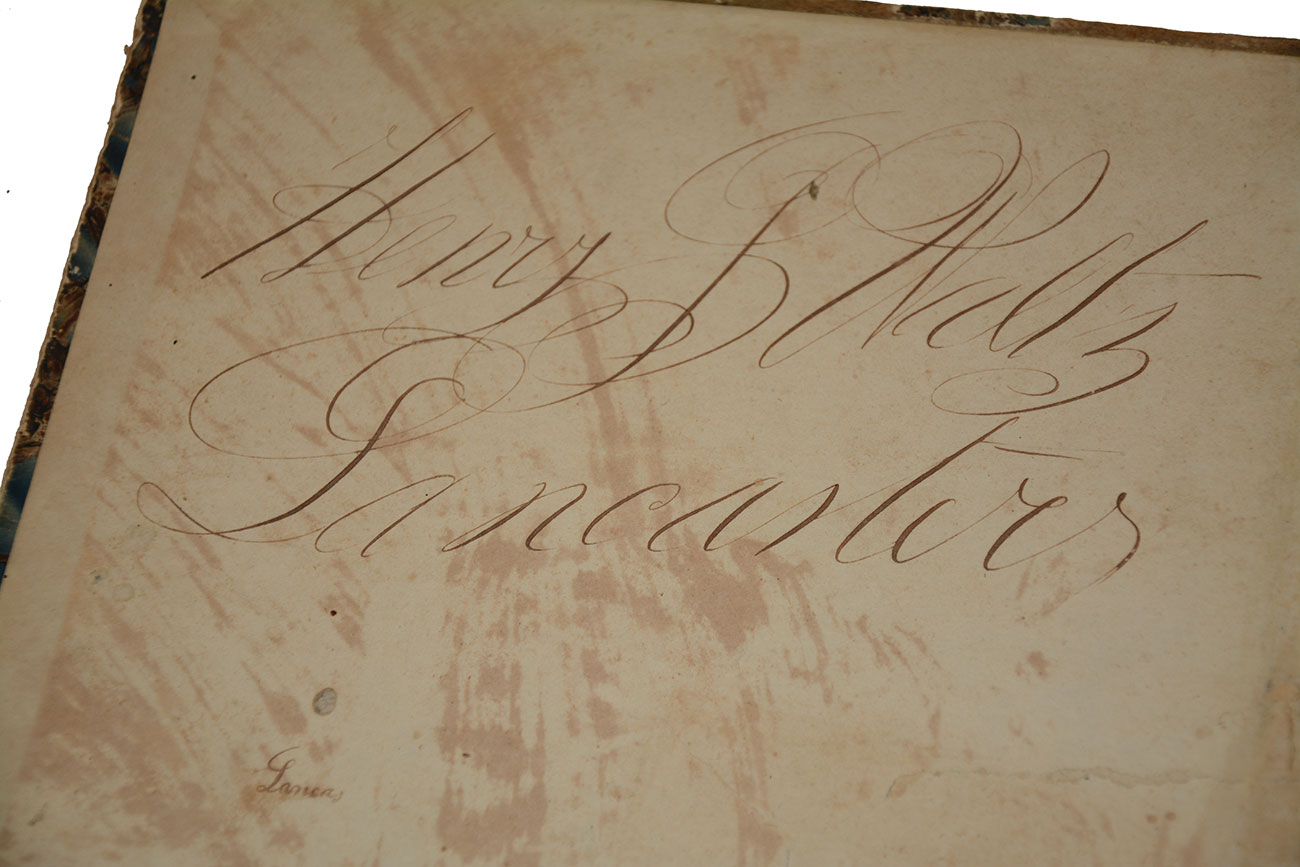
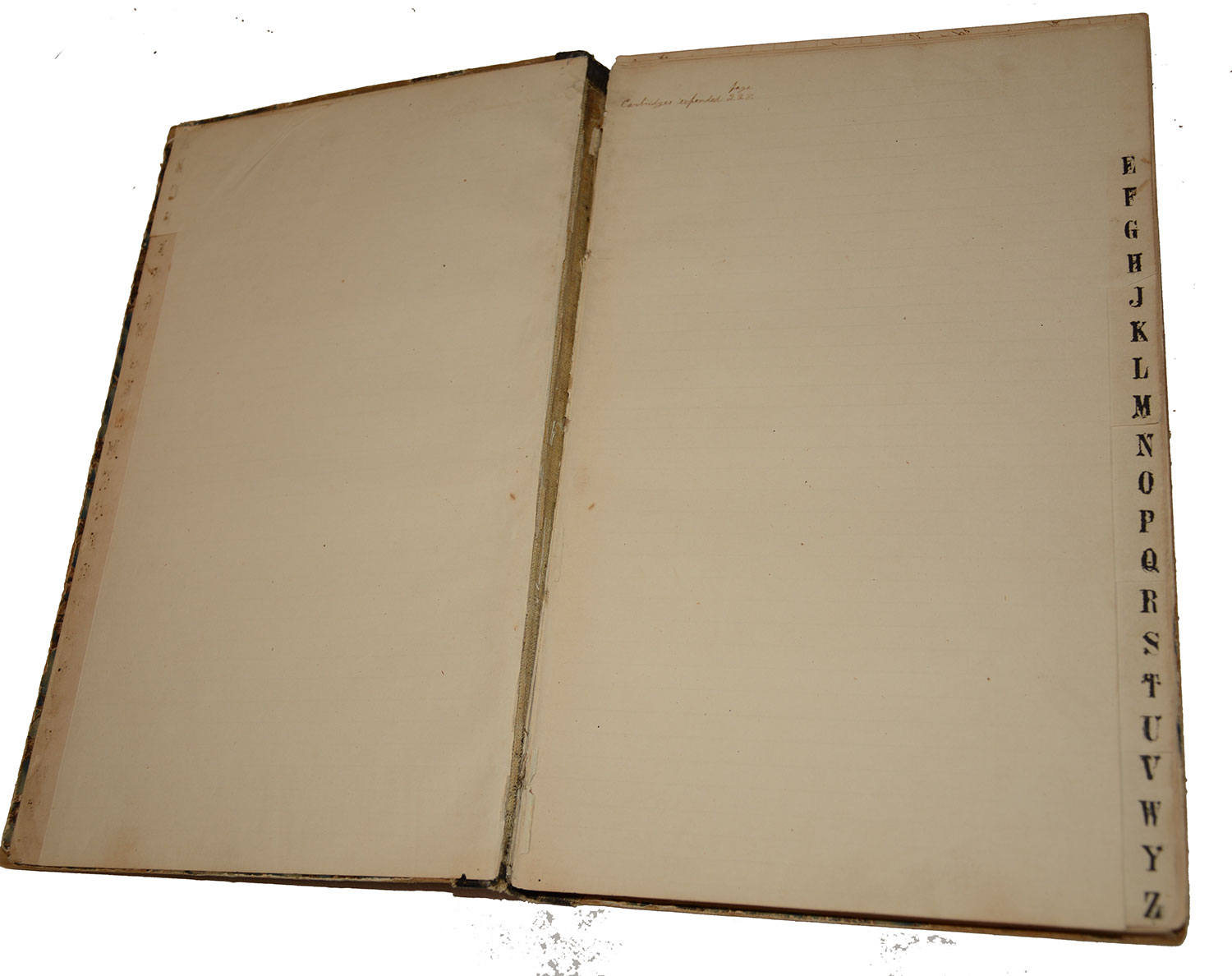
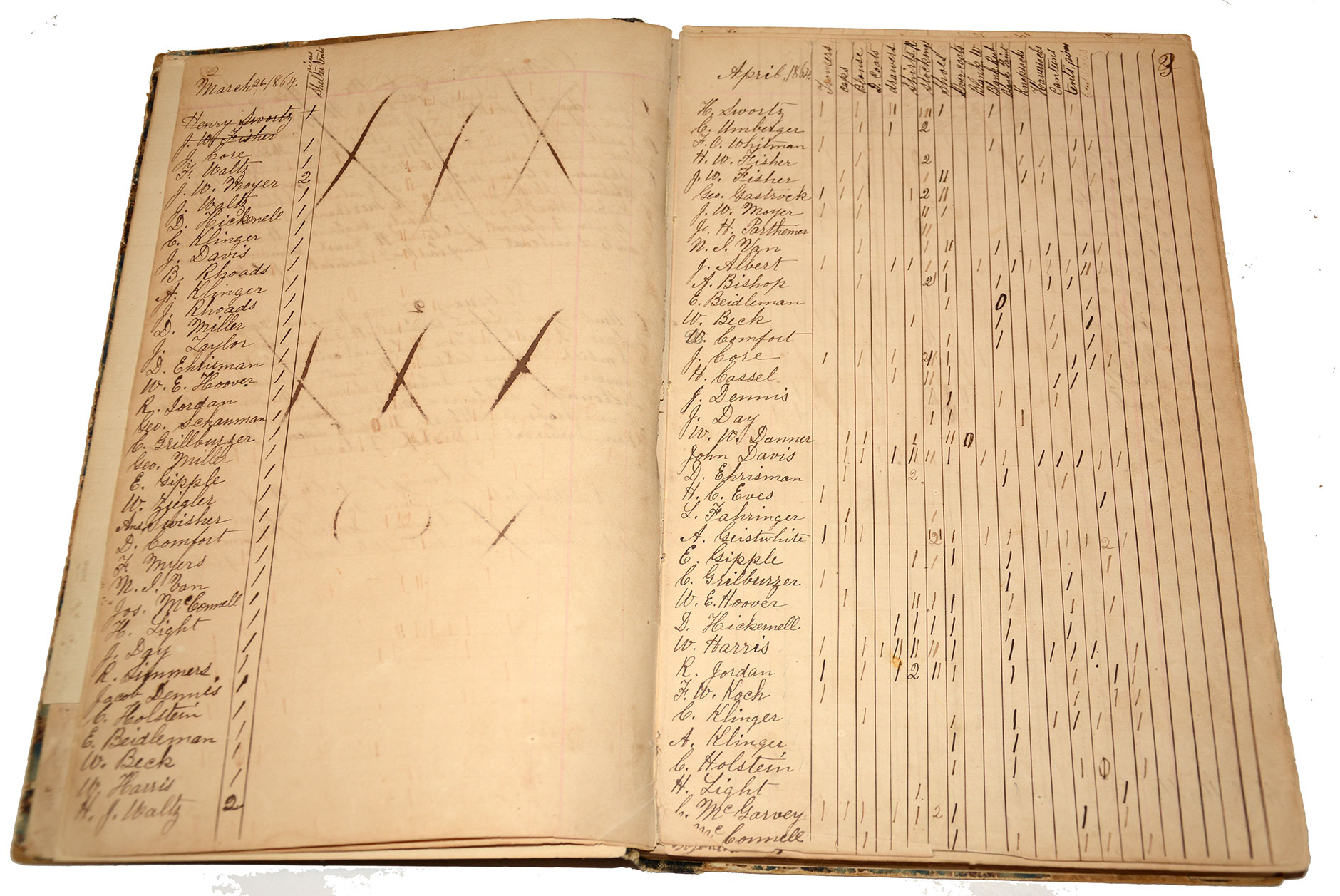
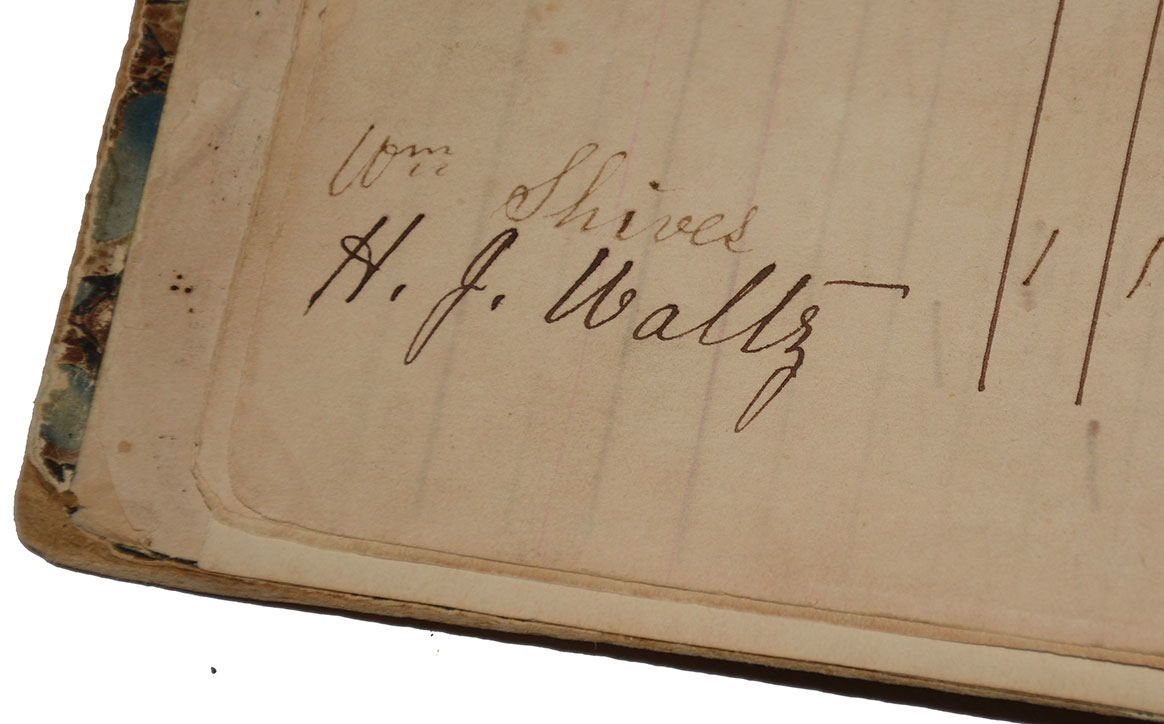
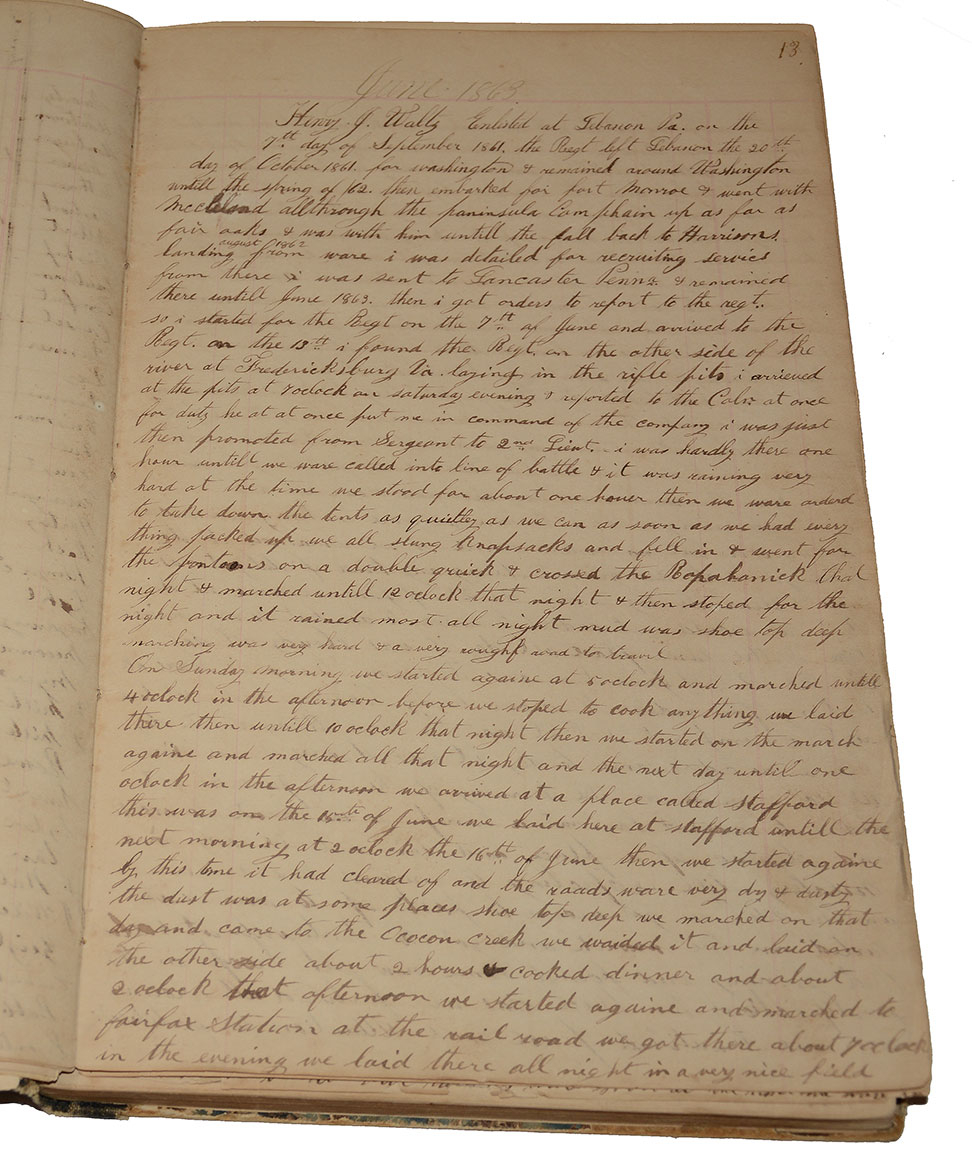
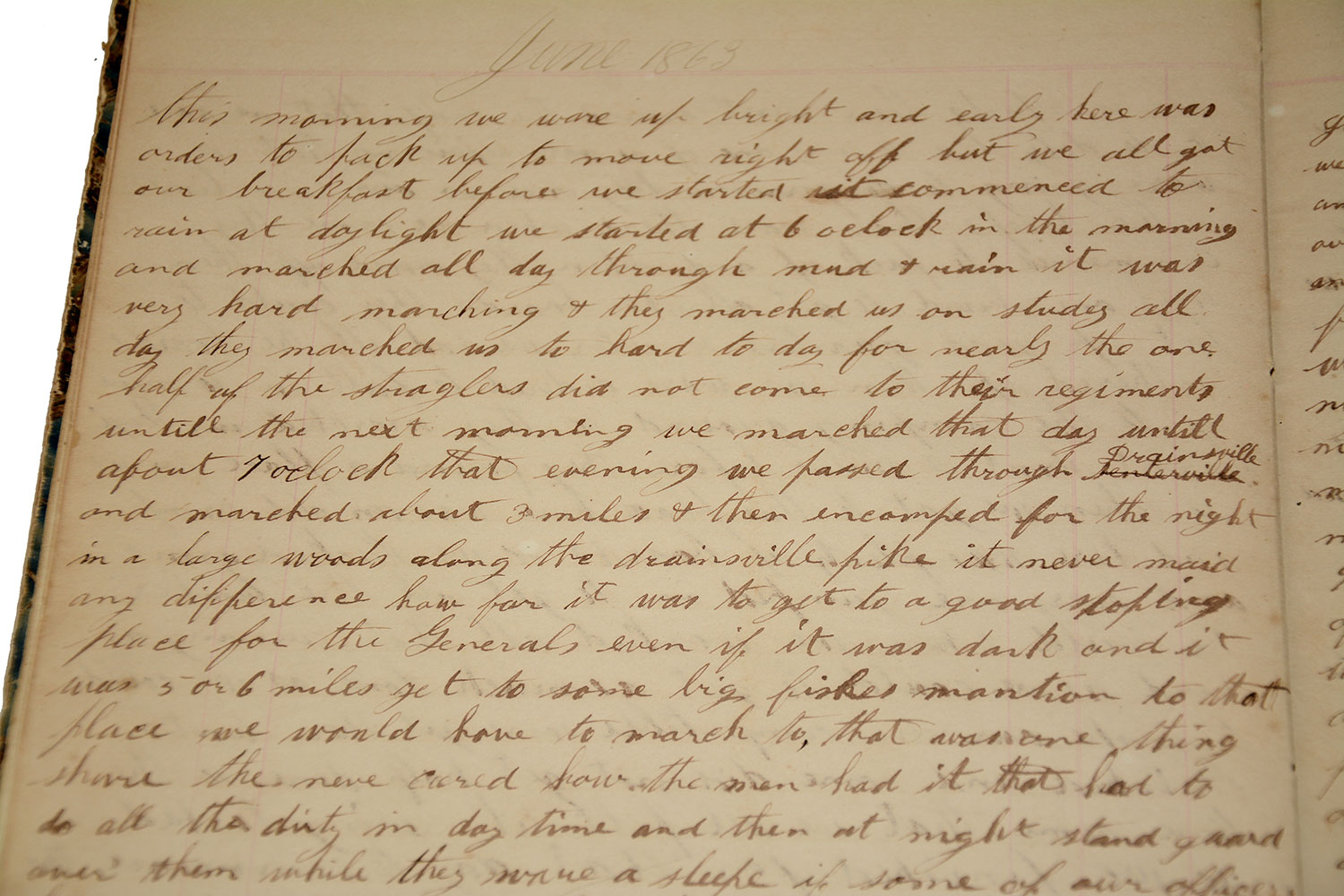
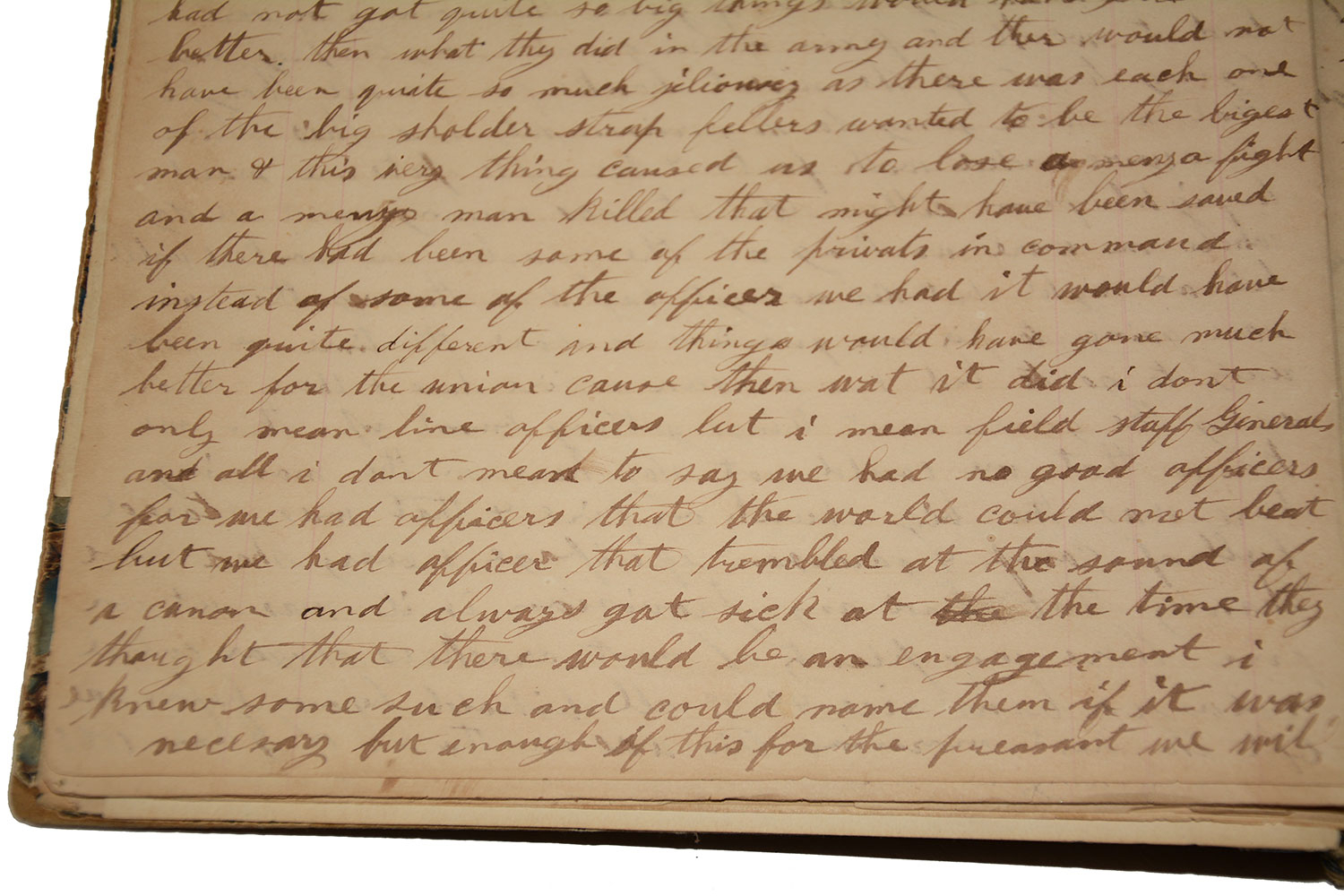
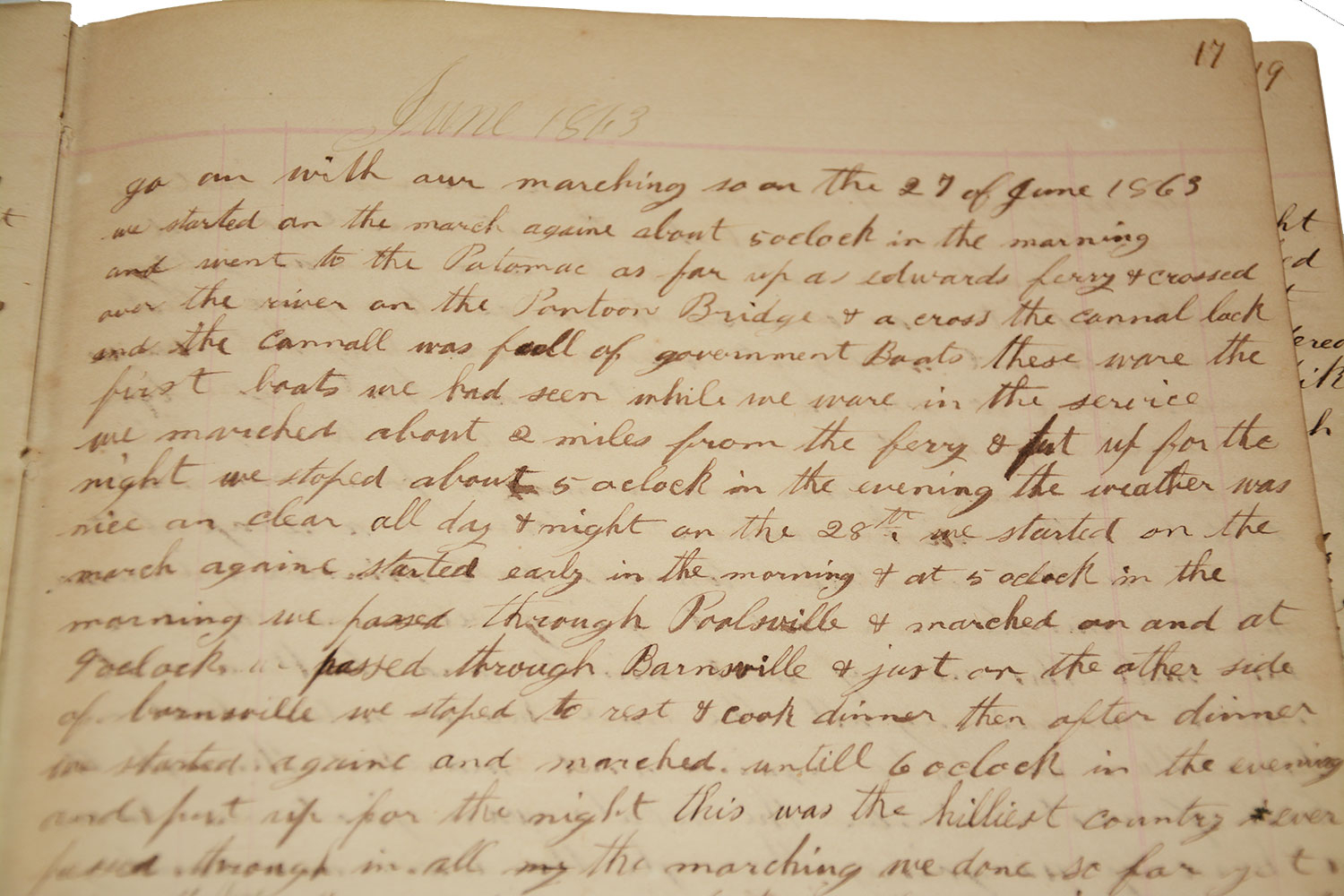
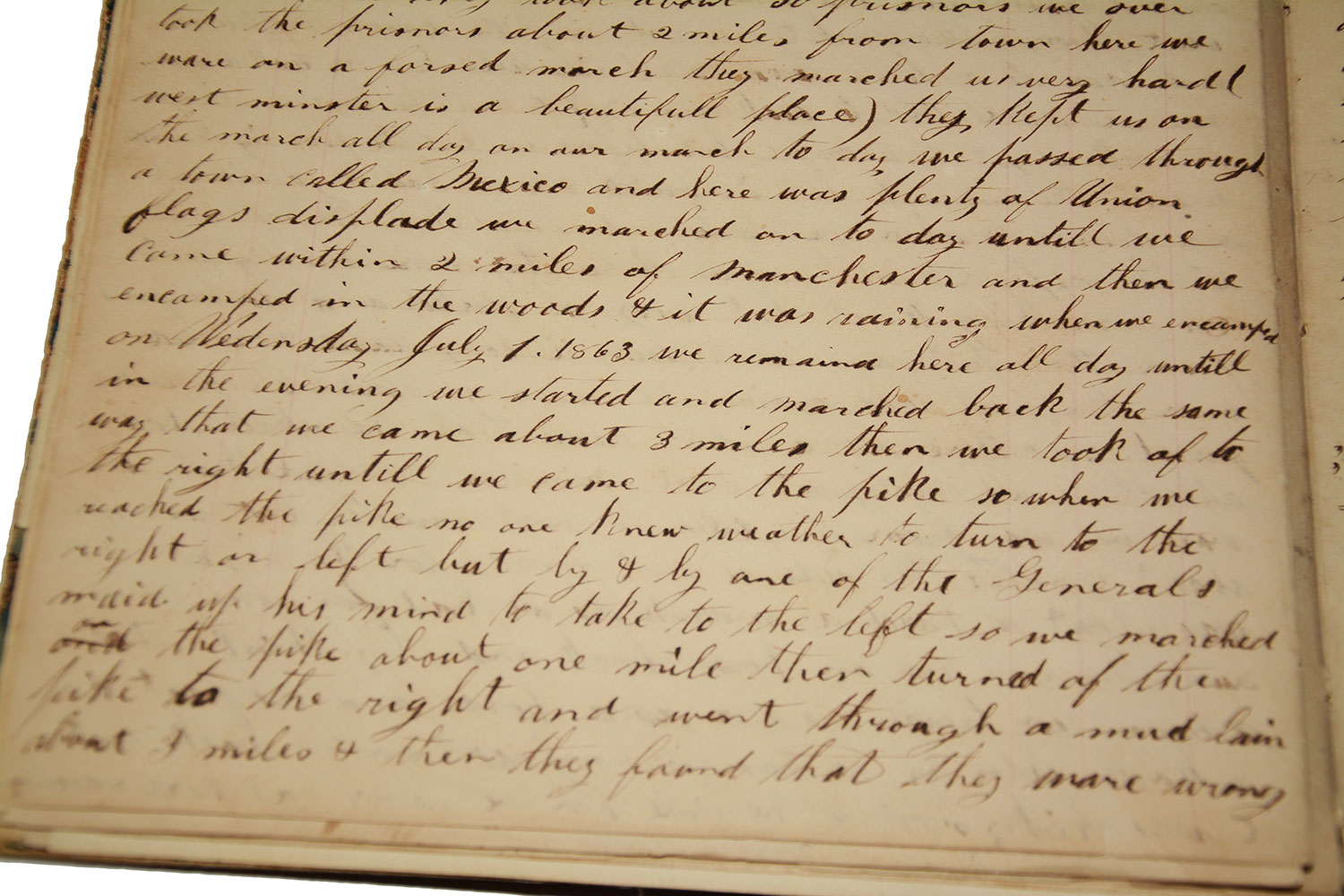
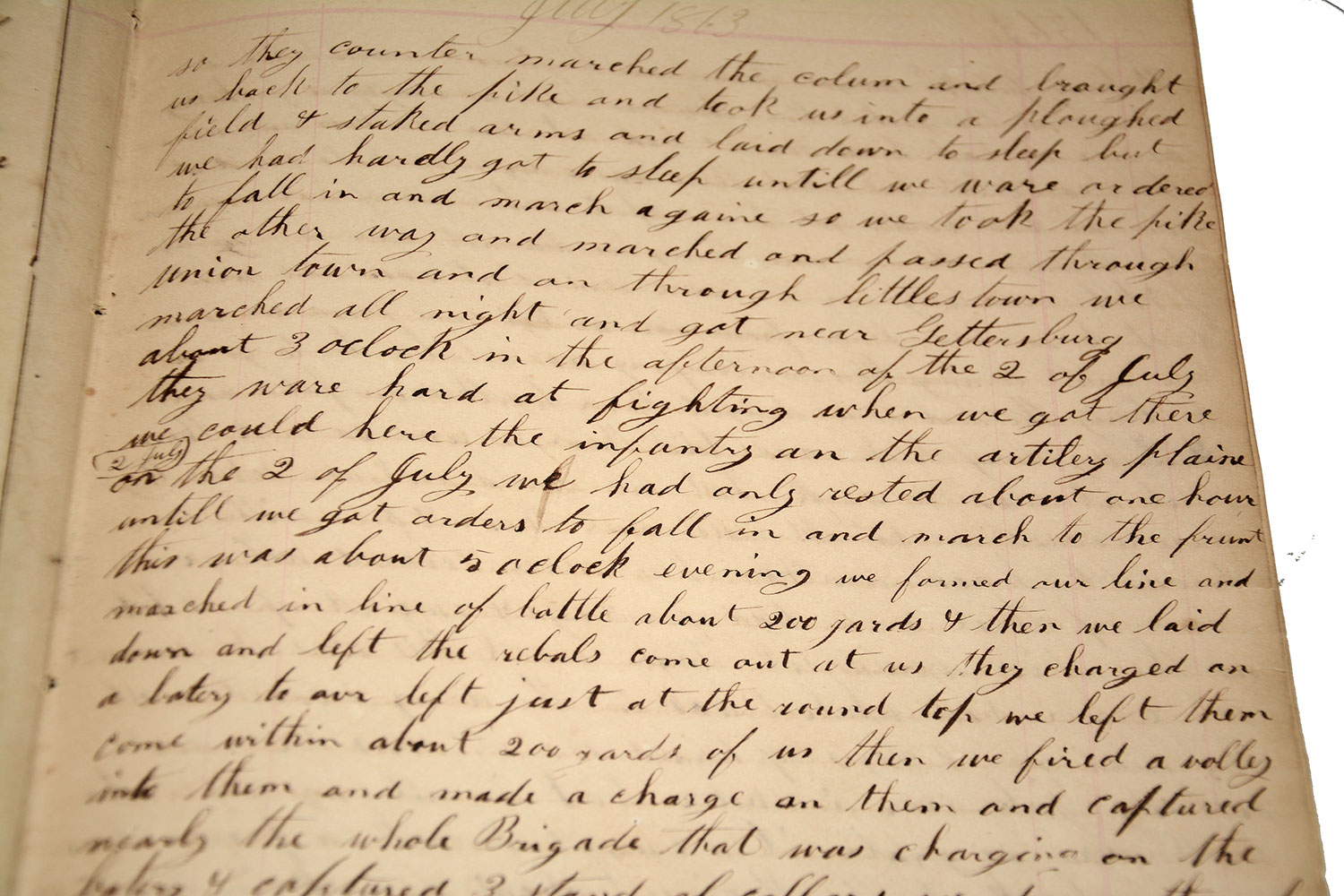
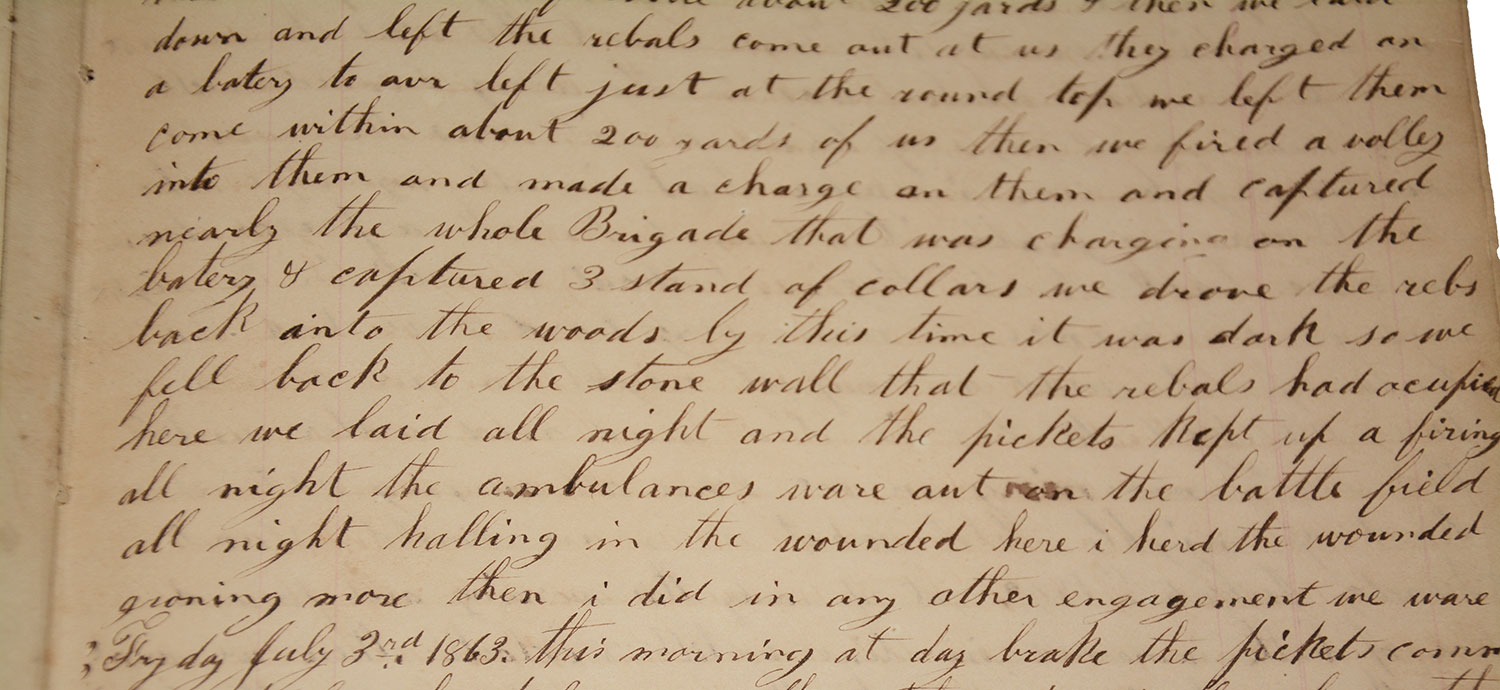
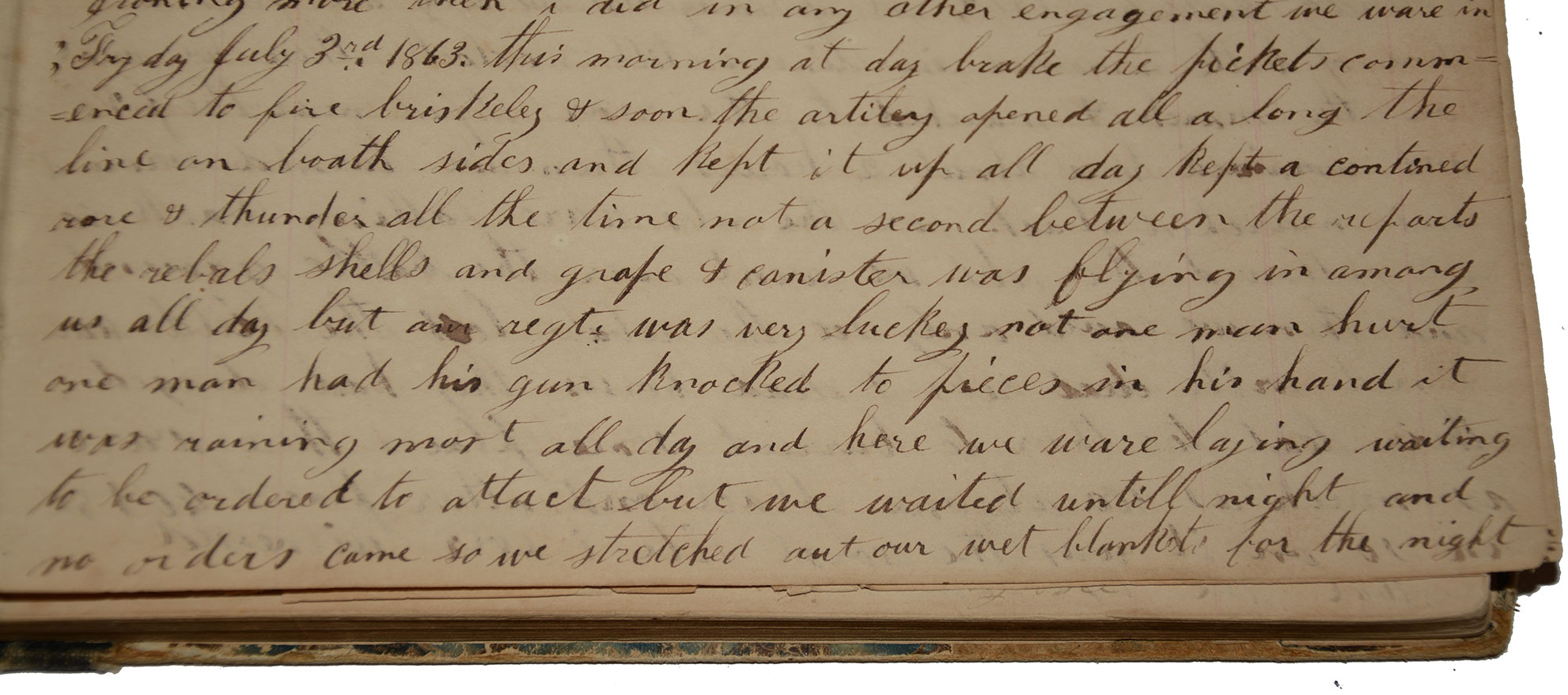
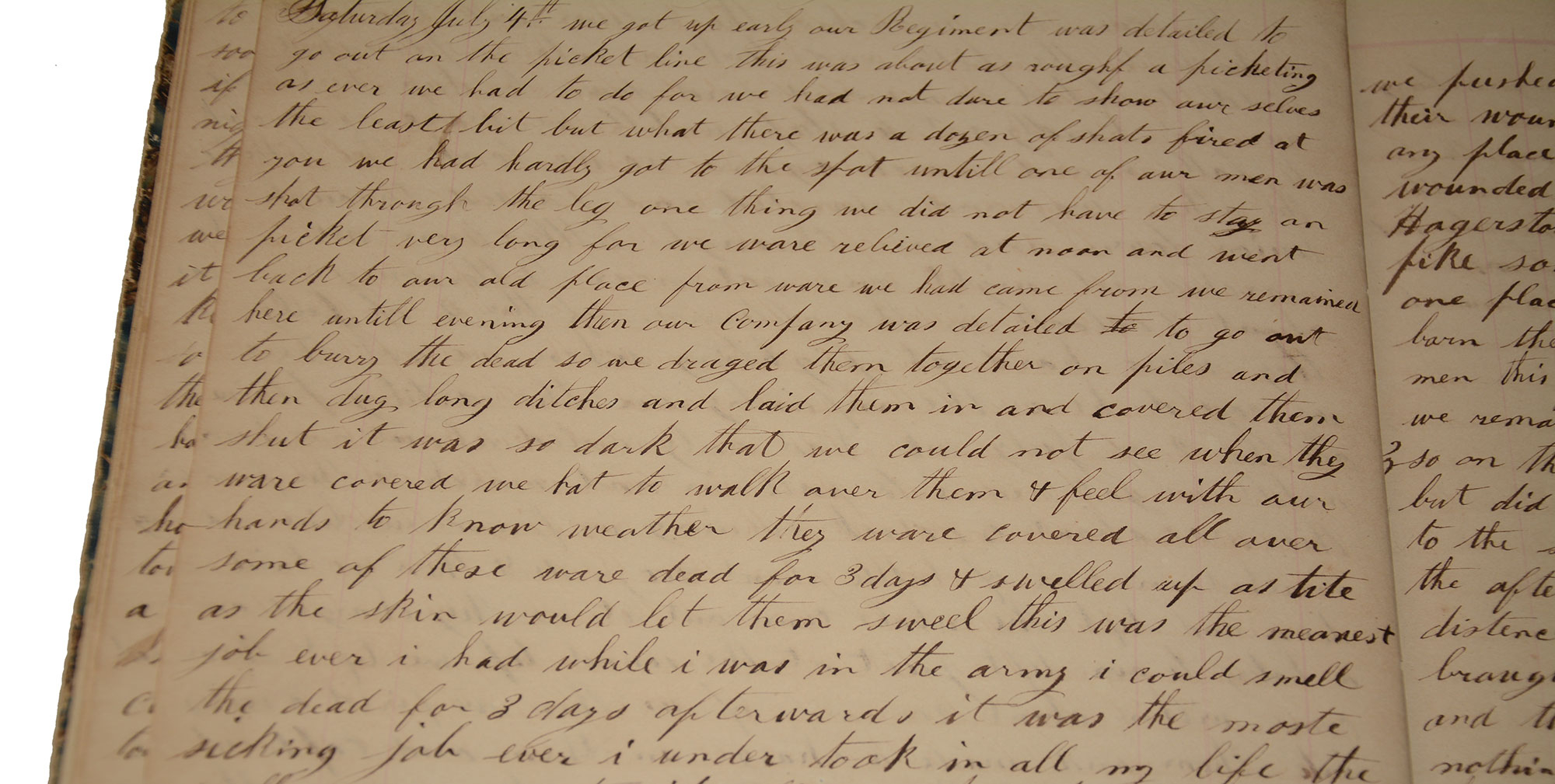
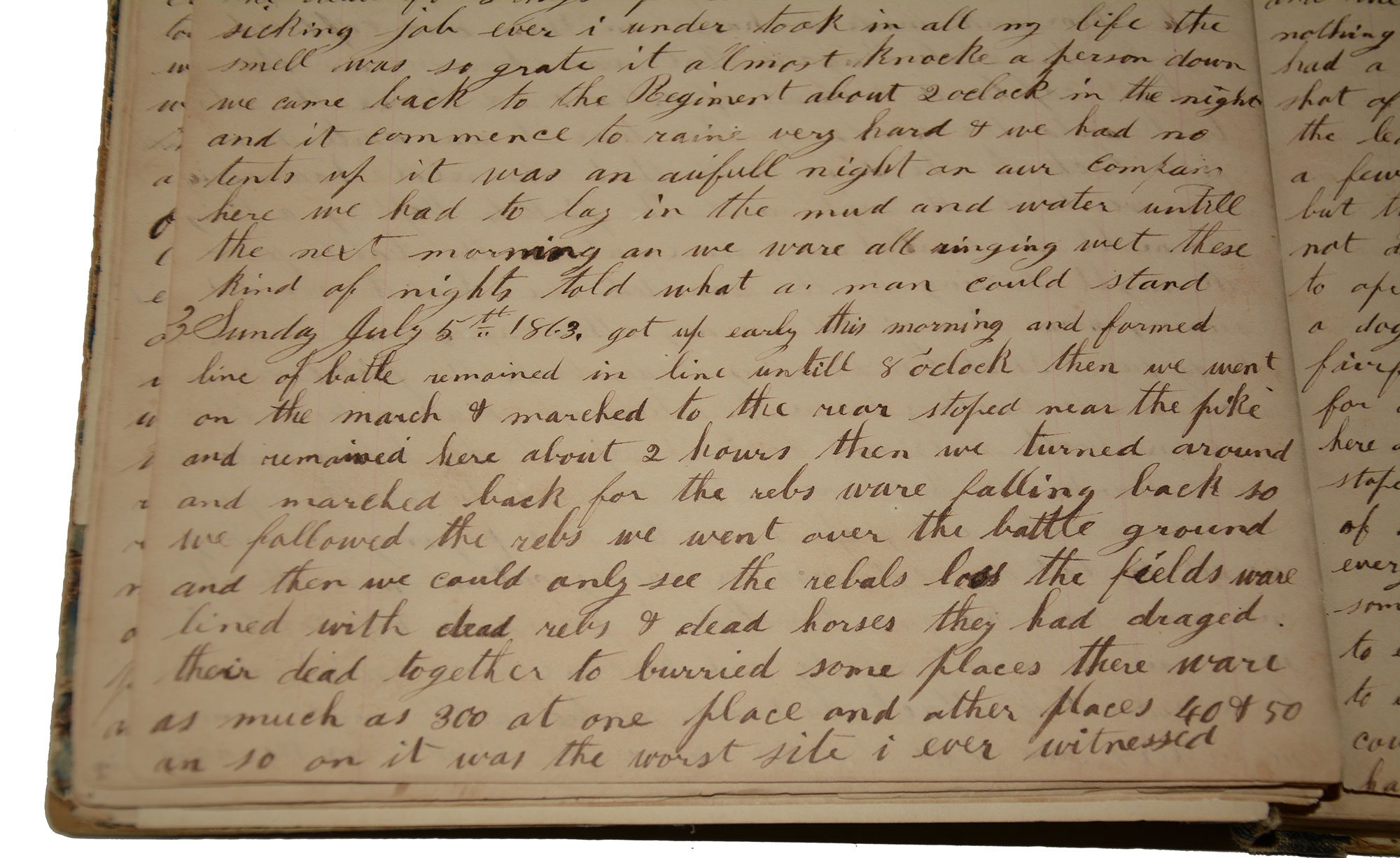
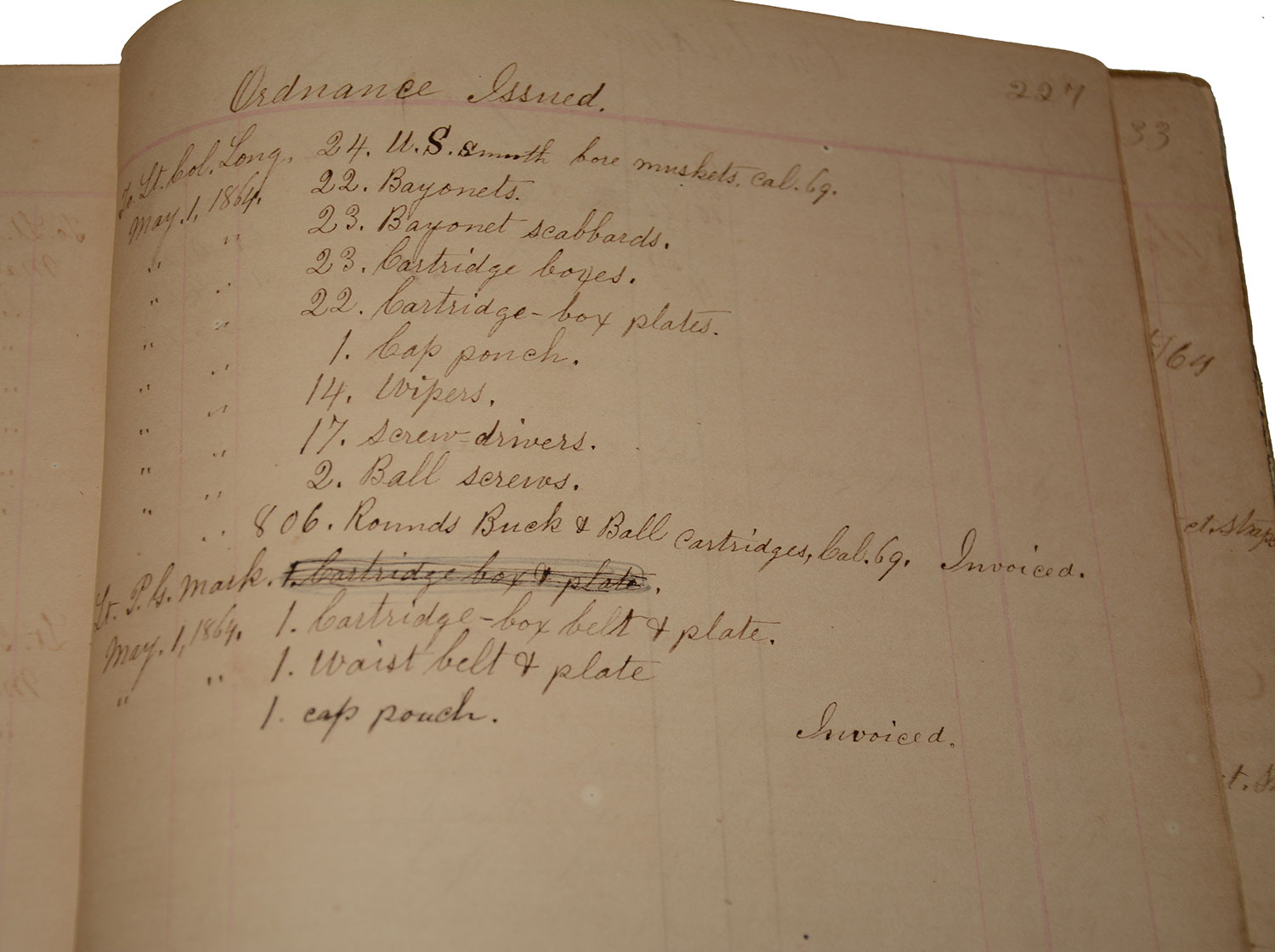
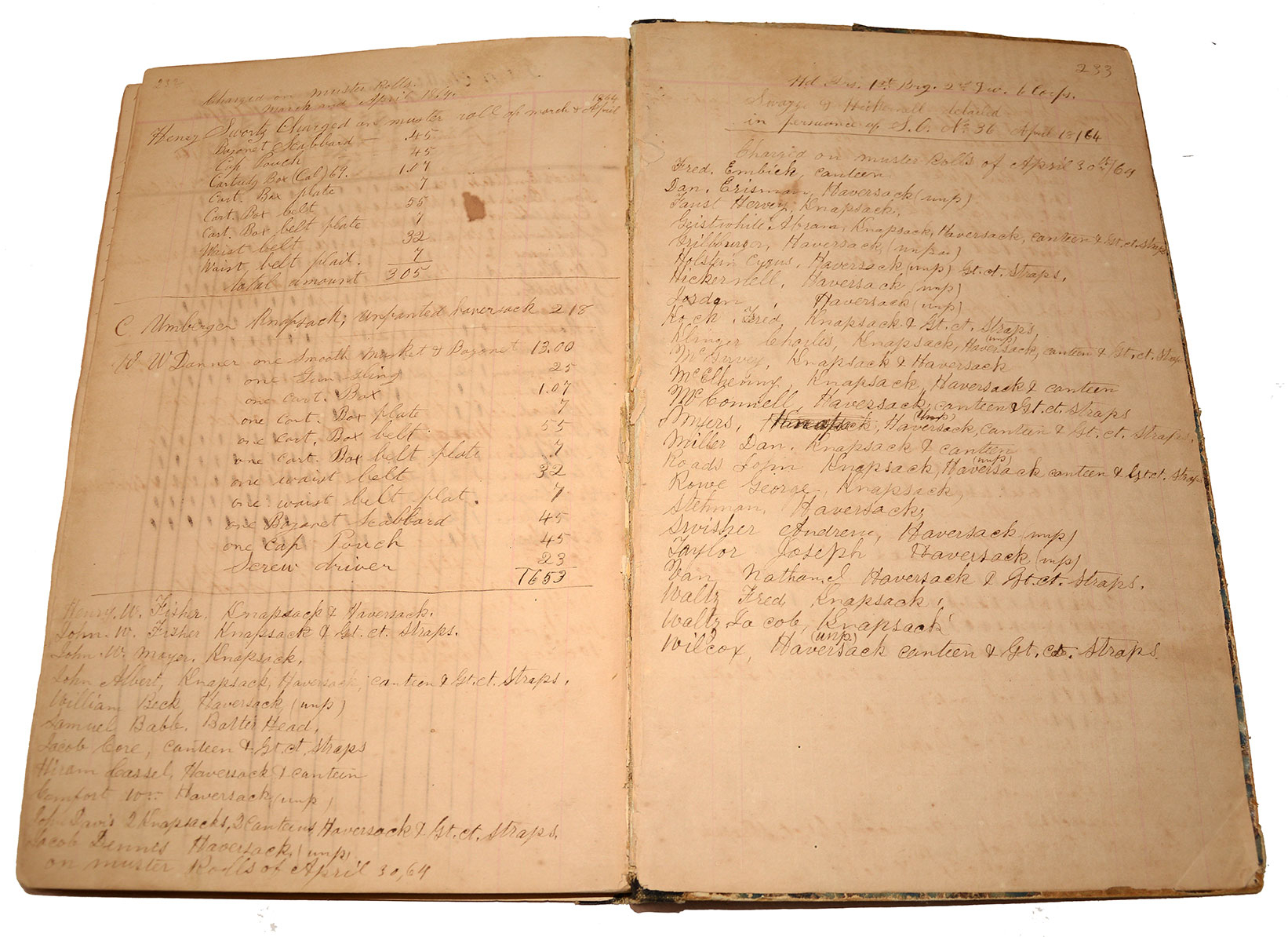
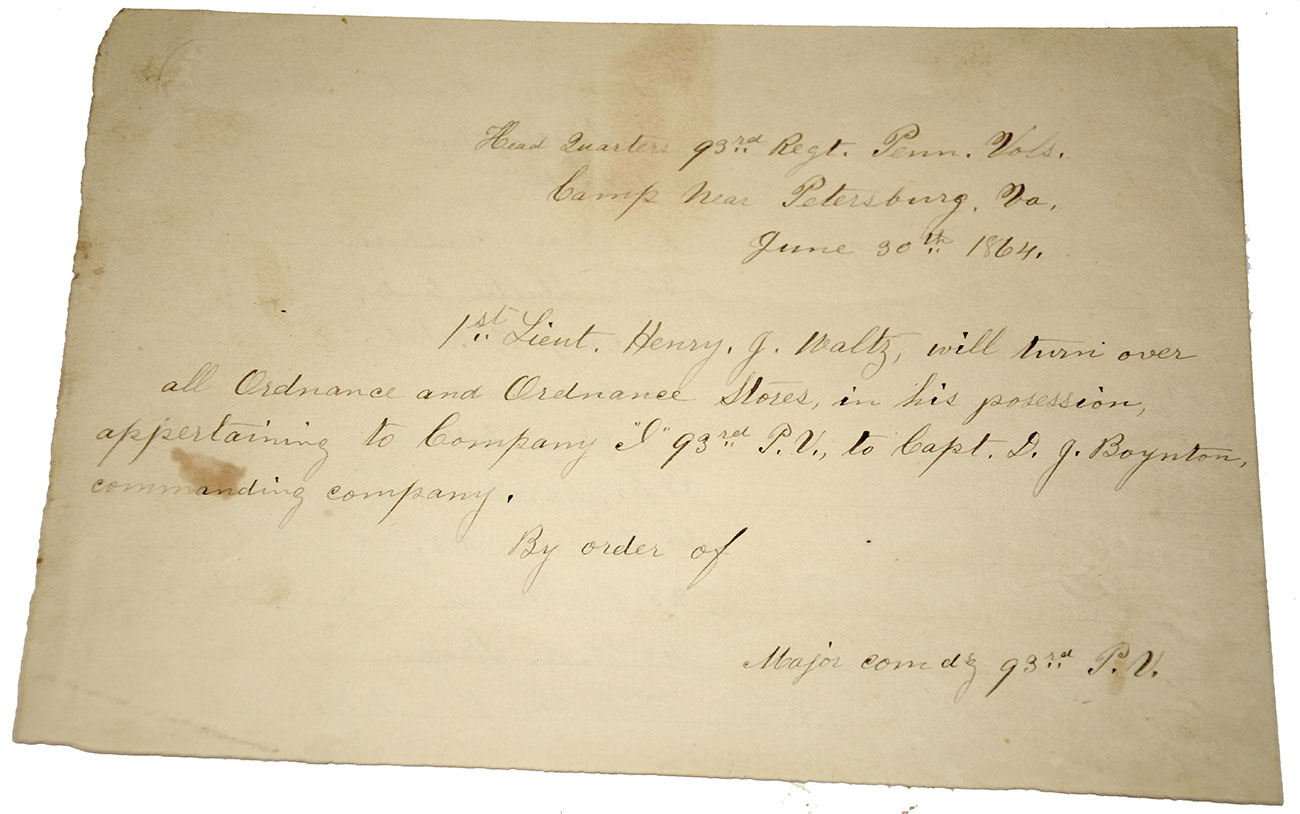
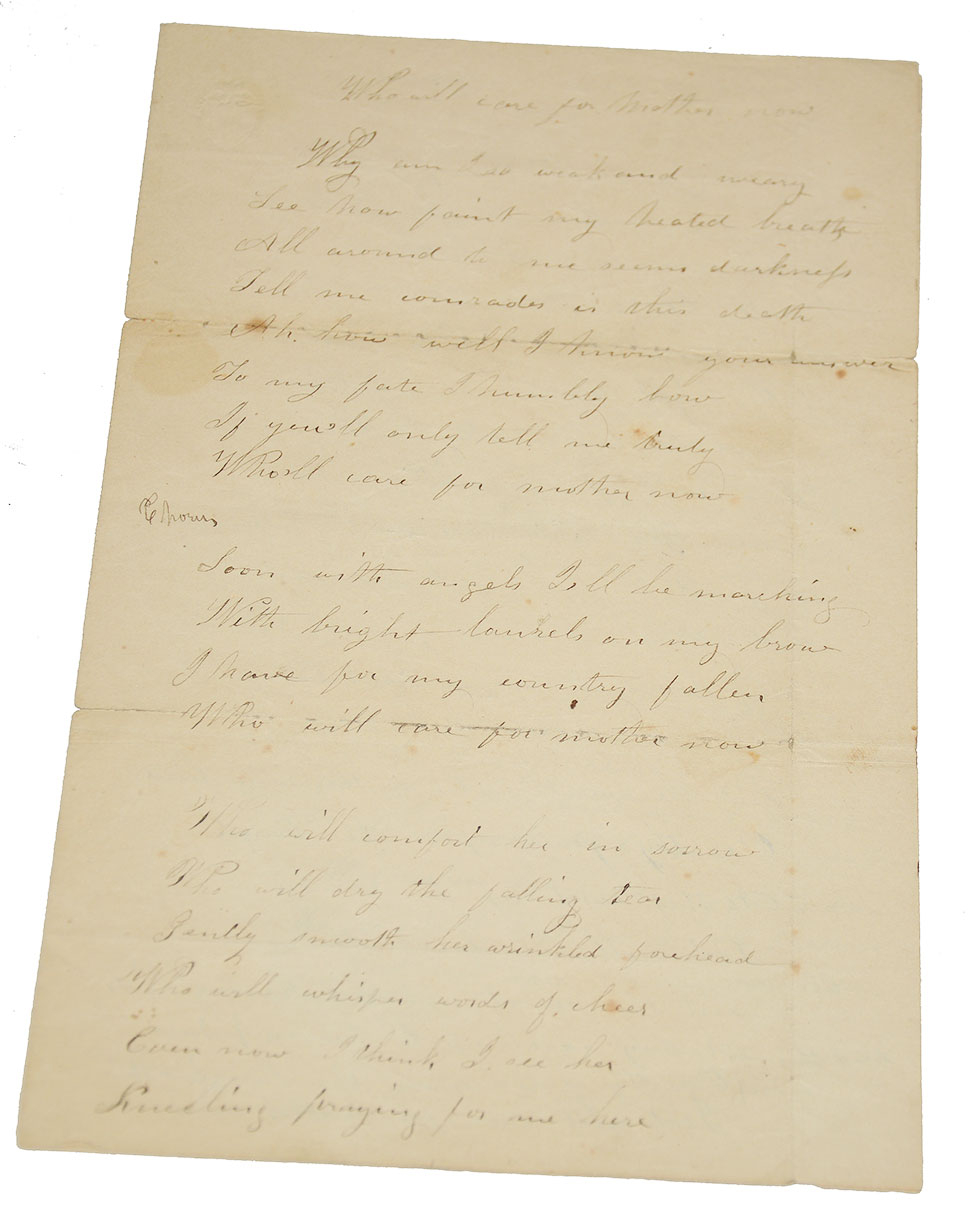
$4,500.00 SOLD
Quantity Available: None
Item Code: 1194-04
An eyewitness account of the Battle of Gettysburg written by Lt. Henry J. Waltz, Quartermaster, Co. I, 93rd Pennsylvania Volunteers. The ledger measures 12” x 7 ½”; covers are rough, some separation to interior binding near the front of the book. It contains 24 pages of journal entries, and 10 pages of accounts. The handwriting is a bit light in places but all is legible. Housed in a custom made, lift top jacket which measures 9” x 13 ¼” x 1 3/8”. Inside the front cover in large letters is written, “Henry J Waltz / Qrmaster”; his signature in ink is also found at the lower left of an accounts page dated April 1864.
The 93rd Pennsylvania was organized at Lebanon, PA and mustered into service between 9/21/61 and 10/28/61 for a term of 3 years service. It took part in battles of the Peninsula Campaign, and was in reserve during the Battles of Antietam and Fredericksburg. Attached to the 6th Corps, it participated in the Chancellorsville Campaign and the Battle of Gettysburg. The regiment was the first of the 6th Corps to get into action at Gettysburg, arriving on the battlefield on July 2nd.
Apparently recorded in Lt. Waltz’s ledger after the fact, as entries seem to be put in a few days at a time, the information must have been recorded during the periods mentioned elsewhere due to the incredible accuracy and detail, rather than later transcribed. After several pages of his Quartermaster’s accounts, Waltz begins to relate his experiences in explicit detail beginning in June 1863, through September 1863. Of note is his recurring criticism of the generals in command and their treatment of the men: “…if they would run out of wiskey [sic] and it was getting night and it was night and it was 10 miles to go to get to a place that they could get wiskey it was a sure thing that we would have to march to that place before we could get any coffee . . . and many a poor man was killed with wiskey without tutching [sic] a drop of it . . .”.
Waltz writes of the forced marching and errors in judgement just prior to the battle: “July 1, 1863 . . . we started and marched back the same way we came about 3 miles . . . when we came to the pike no one knew weather [sic] to turn right or left so we marched on the pike about one mile . . . then about 3 miles and then they found they ware [sic] wrong so they counter marched the colum [sic] and brought us back. We marched all night and got near Gettersburg [sic] about 3 in the afternoon of the 2nd of July, they ware hard fighting when we got there . . . about 5 o’clock in the evening we formed our line . . . and then we laid down and left [let] the rebels come out at us, they charged to our left just at the round top we left them come within 200 yards of us then we fired a volley into them and made a charge on them and captured nearly the whole Brigade . . . we drove the rebs back into the woods, but this time it was dark so we fell back to the stone wall that the rebels had occupied . . . the ambulances ware out on the battlefield all night halling [sic] in the wounded here I herd [sic] the wounded groning [sic] more than I did any other engagement.”
“July 3rd, 1863, this morning at daybreak the pickets commenced to fire…the artillery opened all along the line on both sides and kept it up all day . . . but no one got hurt. It was raining most all day . . .”
“July 4th, 1863, . . . . our regiment was detailed to go out to the picket line . . . this was about a rough as we ever had to do . . . in the evening our company was detailed to go out to bury the dead so we dragged them together in piles and then dug long ditches and laid them in covered them shut . . . it was so dark we hat [had] to walk over them and feel with our hands to know (if they were covered) . . . some of them ware dead for 3 days . . . it was the most sickening job I ever undertook in my life.”
On July 5, 1863, he goes on to write of the retreat of the Confederate troops, and the atrocities he witnessed. After the final skirmishes he records, “. . . I had a long talk with one of the rebs he had his arm shot off at Gettesburg it did not seem to effect him in the least, he allowed this war was just got up through a few stubborn bull heads and I think he was right . . .” Waltz continues on with his recounting the hardships and his battle experiences until September.
After the battle of Gettysburg the 93rd Pennsylvania guarded artillery while it crossed the mountains, then was detailed for picket duty at Funkstown. It shared in the Mine Run Campaign, then was ordered to Harper’s Ferry. In March it took in 800 new men and returned to Brandy Station. They endured heavy losses at the Wilderness and took part in the ensuing Overland Campaign of 1864, including Spotsylvania, Cold Harbor and Petersburg. On July 9 it was ordered to the defenses of Washington, D.C., seeing additional action at Opequan, Fisher’s Hill, and Cedar Creek. On October 28, 1864, the members who did not re-enlist, including Lt. Waltz, were mustered out. The remaining men remained in service until late June, 1865.
Henry Jackson Waltz was born in Lancaster County, PA in 1831; in 1860 he was a tin plate by profession residing in Lower Swatara Township, Dauphin County. He enlisted as a Private on 10/7/61 and was mustered into Co. I, 93rd PA as a private. Promoted to Sergeant, date unknown; 2nd Lieut. on 5/26/63; and finally to 1st Lieut. on 1/1/64. Waltz died on 12/3/10 at the age of 79 in Sunbury, Northumberland County, PA. He is buried in Pomfret Manor Cemetery in Sunbury.
Ledger is accompanied by a brief amount of internet research material, as well as a June 1864 dated handwritten note to Waltz directing him to “turn over all Ordnance and Ordnance Stores, in his possession, appertaining to Company “I” 93rd P.V., to Capt. D. J. Boynton, commanding company.” Also accompanied by handwritten lyrics for the period song, “Who will care for Mother now”.
This eyewitness account written by an ordinary man, called upon by his country to perform extraordinary tasks, shows much sensitivity and presents vivid historic details of that most important period of the Civil War. [ld] [ph:L]
~~~~~~~~~~~~~~~~~~~~~~~~~~~~~~~~~~~
THIS ITEM, AS WITH ALL OTHER ITEMS AVAILABLE ON OUR WEB SITE,
MAY BE PURCHASED THROUGH OUR LAYAWAY PROGRAM.
CLICK HERE FOR OUR POLICIES AND TERMS.
THANK YOU!
Inquire About VIVID EYEWITNESS ACCOUNT OF THE BATTLE OF GETTYSBURG – LT. HENRY J. WALTZ, 93RD PENNSYLVANIA VOLUNTEERS
Most Popular
Historical Firearms Stolen From The National Civil War Museum In Harrisburg, Pa »
Theft From Gravesite Of Gen. John Reynolds »
Selection Of Unframed Prints By Don Troiani »
Fine Condition Brass Infantry Bugle Insignia »
Large English Bowie Knife With Sheath 1870’S – 1880’S »
Imported (Clauberg) Us Model 1860 Light Cavalry Officer's Saber »
featured item
DAGUERROTYPE IN UNIFORM OF LEWIS HENRY LITTLE, BREVET FOR GALLANT AND MERITORIOUS CONDUCT AT MONTEREY 1846; KILLED IN ACTION AS CONFEDERATE BRIGADIER GENERAL AND DIVISION COMMANDER AT IUKA 1862
This very clear sixth-plate daguerreotype dates about 1850 and shows Lewis Henry Little, usually referred to by his middle name, as a Captain in the 7th U.S. Infantry. Born in Maryland in 1817, he was appointed 2nd Lieutenant in the 5th US Infantry… (1138-1808). Learn More »


